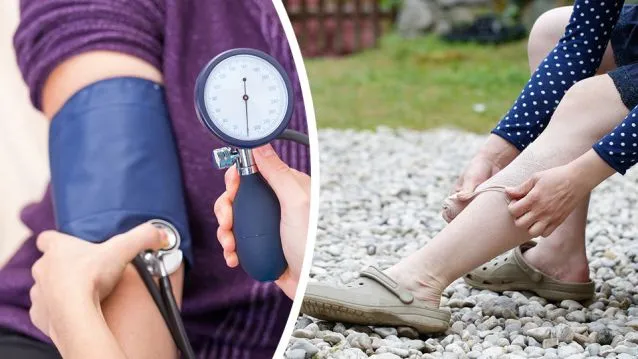We’ve all heard about ways to lower blood pressure for optimal health, but what about those of us who need to raise it? Here are some easy, natural steps you can take.
Signs of low blood pressure
Never fear — low blood pressure is only something to worry about if it gets too low. At that point, typical symptoms can include dizziness, lightheadedness, nausea, dehydration and excessive thirst, lack of concentration, blurred vision, clammy skin, rapid breathing, fatigue and depression.
Common causes of low blood pressure include things like prolonged time in bed, pregnancy, severe internal bleeding, certain medications, heart problems, an underactive thyroid, allergic reactions and nutritional deficiencies.
If your symptoms are milk, usually the best thing to do is not to worry — the stress on its own will cause more problems than it’s worth). If your low blood pressure is serious, knowing the underlying causes is important. Here are some healthy and easy ways to raise your blood pressure:
1. Use more salt
Most people know they need to keep their salt intake at a moderate level, in order to avoid high blood pressure. However, salt can be great if your level is too low — especially as a short-term solution. If you are going to increase your salt consumption, it is best to go for foods with naturally occurring salt, rather than prepared foods like canned soup and frozen dinners, where the salt has been added during manufacturing. Celery, beets and milk all have naturally occurring sodium. Ham has one of the highest sodium contents, and ground beef is quite high in sodium as well. A large egg can have up to 170mg of sodium, and artichokes are a great vegetable to increase your salt intake.
Or, if you are adding salt to your cooking, it’s important to consider the type of salt you use. Sea salt contains a range of nutrients and helps prevent dehydration, as well as helping to rid the body of harmful toxins and acids. Unlike processed table salt, Himalayan pink salt is pure, retaining its original nutrients and minerals. It can help boost digestion by stimulating the salivary glands, and one of the minerals it contains, magnesium, is important for breaking down the sugars and starches in your body.
2. Drink more water
It seems to be the golden rule for any non-serious health problem, but here again, fluids will increase blood volume and obviously also prevent dehydration — two important steps in treating hypotension. In a similar vein (pardon the pun), you’ll want to limit alcoholic beverages.
3. Use compression stockings
Most people use these to prevent the pain and swelling of varicose veins, but they can also generally prevent the pooling of blood in your legs.
4. Cross your legs
This is a bit of a no-no for people with high blood pressure, and for just the same reason, it’s a quick fix for low blood pressure. One study found that leg crossing while seated increased systolic blood pressure by almost 7% and diastolic by 2%. However, you don’t want to do this too often, as there are other consequences: compressing your leg veins can “predispose you to inflammation of the veins of the lower legs and possibly a blood clot,” according to cardiologist Stephen Sinatra. It’s recommended that you don’t stand in one place for along time or lift heavy objects, but raising the head of the bed can be beneficial.
5. Eat small meals more often
Large, heavy meals are associated with a drop in blood pressure, so eating smaller meals, say five to six times a day, can be better for your blood pressure — and better for your digestion as well.
6. Get regular exercise
Like water, this last one is a bit of an oldie, but a goodie. Exercise promotes blood flow. Swimming, walking, cycling, Pilates, or running are good options. The main thing is to avoid exercise that involves suddenly lifting your head, as that can bring on low-blood pressure symptoms. For those concerned about high blood pressure: don’t be. Exercise is great for combating that as well — it keeps your pressure where it should be.
— Tamara Pearson

